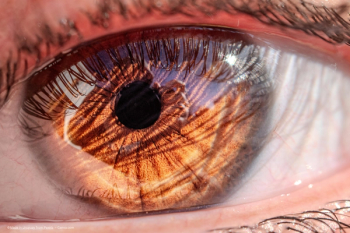
Ancestry differences in longitudinal VF in ADAGES study
New findings from the ongoing African Descent and Glaucoma Evaluation Study (ADAGES) support previous results indicating that ancestry differences in visual function in healthy eyes are likely to be a sign of early disease.
Recent results from an ongoing study support the hypothesis that ancestry differences in visual function found in healthy eyes may be signs of early glaucoma.
The prospective, longitudinal, observational cohort study, sponsored by the National Eye Institute, began in 2003 and was intended to help researchers understand better the prevalence, severity and progression of primary open-angle glaucoma (POAG) in people of African descent (AD).
The study was launched in the context of discrepancies observed between different population subgroups. The prevalence of POAG in people of AD is six times higher in certain age groups compared with people of European descent (ED), and POAG is also more likely to result in irreversible blindness, appearing approximately 10 years earlier and progressing more rapidly in people of AD.
Previous findings
Previously reported findings from ADAGES showed small but statistically significant differences in visual function in healthy eyes based on participants' ancestry, Dr Racette said.
Further analysis suggested that these findings could be a sign of early disease in the individuals of AD rather than due to the ancestry composition of the normative databases, which are composed primarily of individuals of ED. This hypothesis was supported by the distribution of the differences along an arcuate-like pattern.
Study objective and design
In the present study, researchers wanted to determine if people of AD with healthy eyes were more likely to develop visual field defects over time compared with people of ED. Participants were selected from the ADAGES and the Diagnostic Innovations in Glaucoma Study. Visual function was assessed longitudinally in 41 healthy eyes of 32 participants of AD and 41 healthy eyes of 27 participants of ED. Each subject had two reliable baseline standard automated perimetry (SAP-SITA) tests and at least 3 years of follow-up data.
The researchers compared the percentage of eyes in subjects of AD and ED with normal SAP results at baseline and confirmed abnormal SAP results at any point during follow-up. Demographically, the only significant difference between the two groups was a higher number of subjects with diabetes in the AD group (14.6% versus 2.4%; p = 0.04).
Results showed a statistically significant difference in the number of eyes in the two groups with normal SAP results at baseline and confirmed abnormal SAP results during follow-up. The investigators found that 31.7% of the eyes in subjects of AD converted from normal to abnormal versus 9.8% of eyes in the subjects of ED (p = 0.01).
Guided Progression Analysis was also performed for all follow-up tests. Results showed that 8.1% of eyes in people of AD and 0% of eyes in those of ED were likely to have progression. However, the difference was not statistically significant (p = 0.08).
"Ancestry differences exist between the healthy eyes of people of African and European descent," Dr Racette said. "That was true on all measures of SAP and it was a robust finding that showed up when we evaluated the SWAP and FDT (frequency doubling technology) tests as well. These differences are distributed along an arcuate-like pattern, and there is a significantly larger percentage of healthy eyes in subjects of AD that show confirmed visual field defects during follow-up."
These findings could indicate that the ancestry differences observed between healthy eyes in people of AD and ED may be signs of early disease in the AD group that could suggest the presence of a selection bias in the ADAGES control group or increased variability in the visual field results within the AD group in the ADAGES, Dr Racette said.
"A larger sample of healthy controls should be tested for a longer follow-up period to understand better what is going on in the controls in the ADAGES study," she concluded.
Newsletter
Get the essential updates shaping the future of pharma manufacturing and compliance—subscribe today to Pharmaceutical Technology and never miss a breakthrough.










































